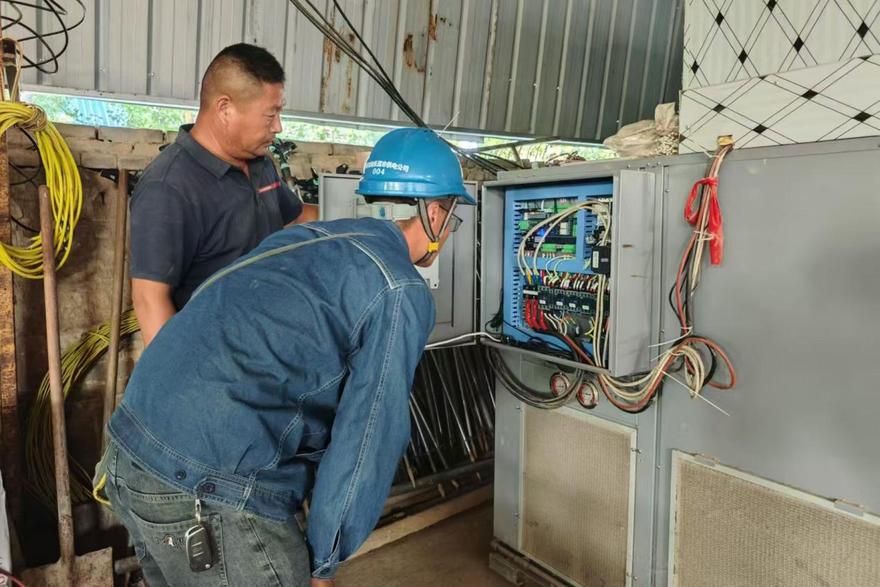
Staff visit a chili drying enterprise to inspect electrical safety conditions (Photo by Liu Nannan)
On September 23rd, the power grid staff from the Guqiao Power Supply Station under the State Grid Xuchang Power Supply Company visited the home of Si Quanmin, a chili farmer, to inspect the electrical conditions of his chili drying facilities, ensuring the safe operations of the chili drying process.
“This year, our village’s chili crops are estimated to yield a conservative 700 jin/mu, with a total gross profit of 2 million yuan. This achievement would not have been possible without the strong support from the power supply company,” said Wang Hongling, the Party Secretary of Beixinzhuang Village in Nanxi Town, Changge City, Henan Province.
Beixinzhuang Village is one of the key villages in Nanxi Town where the chili industry is being vigorously developed. To better serve the development of the chili industry, since 2020, the State Grid Xuchang Power Supply Company has focused on the electricity needs of the industry’s development. The Company has successively built eight new distribution transformer districts for drought-resistant irrigation in five villages including Caoniantou, Beixinzhuang and Shuiniuchen. This initiative has significantly enhanced the power supply capacity and reliability in the chili planting areas.
In April this year, Xinghui Food Technology Co., Ltd., covering an area of 22 mu, was completed and put into operation. Upon learning about the needs of this enterprise, the Guqiao Power Supply Station proactively carried out the construction of supporting power facilities, adding 800 kVA of distribution capacity for the enterprise. In addition, 0.5 kilometers of high and low voltage lines were constructed or renovated to fully meet the electricity demands of the enterprise’s production.
While ensuring a reliable power supply, the State Grid Xuchang Power Supply Company also established a special service team to regularly visit and monitor the electricity load conditions of the chili industry during critical periods such as breeding, irrigation, growth, and harvesting, ensuring that the electricity demands of agricultural production are met promptly.
Copyright ©1997- by CRI Online All rights reserved